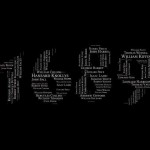 The following article is by Shawn Wright. (original source here at 9marks ministries) He is an Associate Professor of Church History at The Southern Baptist Theological Seminary in Louisville, Kentucky as well as the Pastor of Leadership Development at Clifton Baptist Church.
The following article is by Shawn Wright. (original source here at 9marks ministries) He is an Associate Professor of Church History at The Southern Baptist Theological Seminary in Louisville, Kentucky as well as the Pastor of Leadership Development at Clifton Baptist Church.
Though I am not sure I agree with every point made in the article, there are some interesting points made which can open up worthwhile discussion.
****(AT THE END OF THE ARTICLE IS A RESPONSE BY DR. SAM WALDRON)
Should you use the 1689 London Confession in your church?
Although the 1689 London Confession (also known as the Second London Confession [SLC] to distinguish it from the 1644, or First London Baptist Confession) is a wonderful statement of Calvinistic Baptist faith, it should not be used as a local church’s statement of faith. Three factors lead to this conclusion
HISTORICAL CONTEXT
First, like all historical documents, the SLC was written in a particular historical context. This context shows the need that Particular Baptists as a whole felt to issue the SLC. The SLC was intended to distance the Baptists from questionable groups and to show their orthodox Protestantism, vis-à-vis other Reformed Protestants. The “Puritan Revolution” in mid-17th century England had its religious expression in the Westminster Assembly. This Puritan group of divines was overwhelmingly Presbyterian in character (though there were a handful of Congregationalists in attendance), so the “standards” it produced —including the Westminster Confession of Faith (WCF; issued in 1646)—were expressions of fundamental Puritan Presbyterianism.
The Puritan revolution failed. With the reign of King Charles II renewed persecution of Protestants began. Before toleration came with the “glorious revolution” of William and Mary in 1688 two other Protestant denominations issued very slightly-modified versions of the WCF. Their reasons for broadly reissuing the WCF were, first, to show their broad agreement with the WCF and, second, to distance themselves from emerging groups like the Quakers who were viewed by orthodox Protestants as holding aberrant doctrine. So the Congregationalists issued the Savoy Declaration in 1658 and the Particular Baptists composed the SLC in 1677. The SLC was issued anonymously in times of Protestant persecution and then with full denominational support after toleration came for Protestants in 1689. We must be aware of the SLC’s place in history, for this influenced its shape.
Of course, the SLC’s historical situation does not mean that the document itself is heretical or even useless for Christians today. That situation does help us, though, to understand the felt need of 17th century Particular Baptists to identify themselves doctrinally with other Protestants in the Reformed tradition. They succeeded from a denomination-perspective. But that does not mean that the SLC should be used as a local church statement of faith. Continue reading


